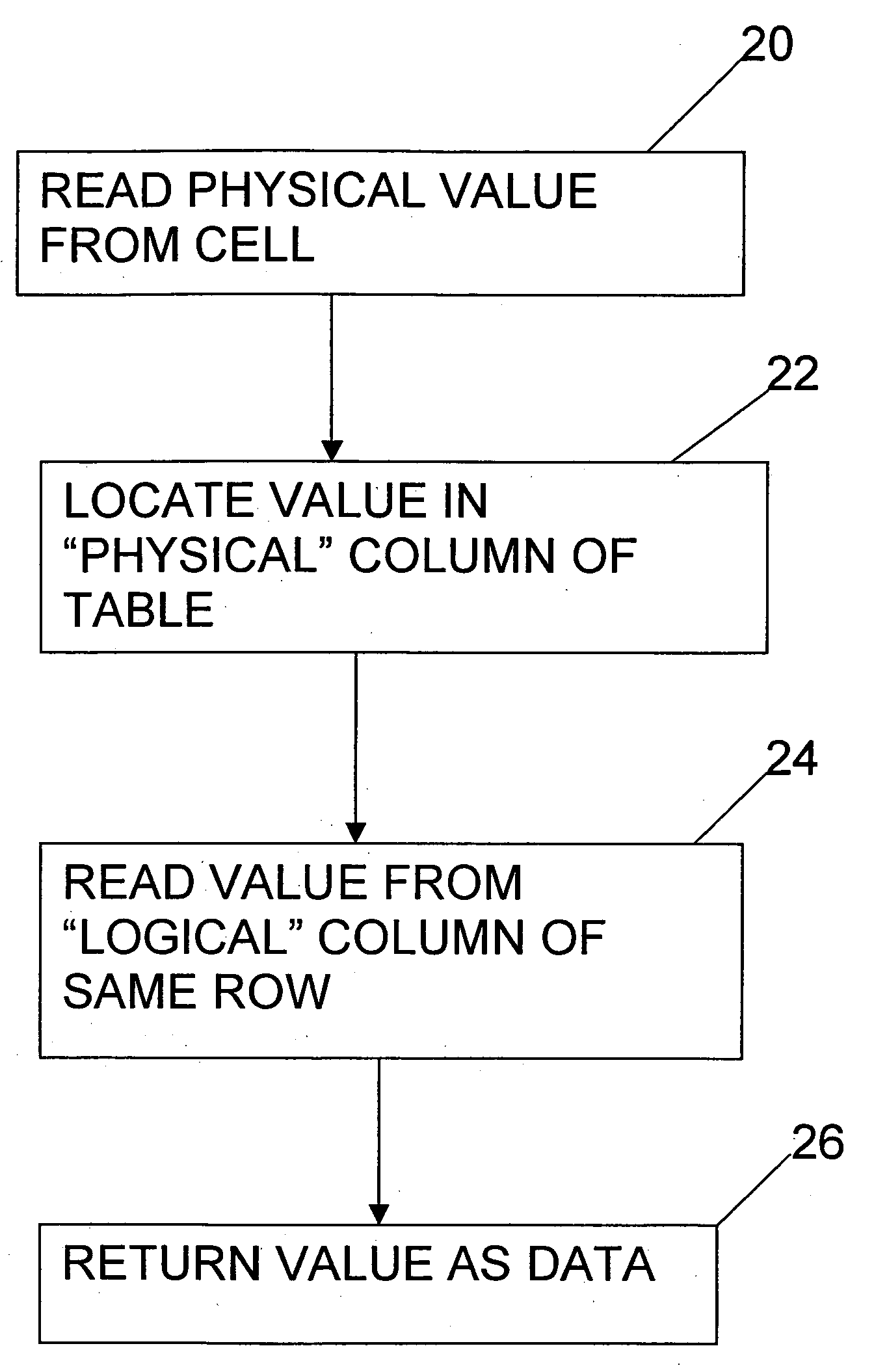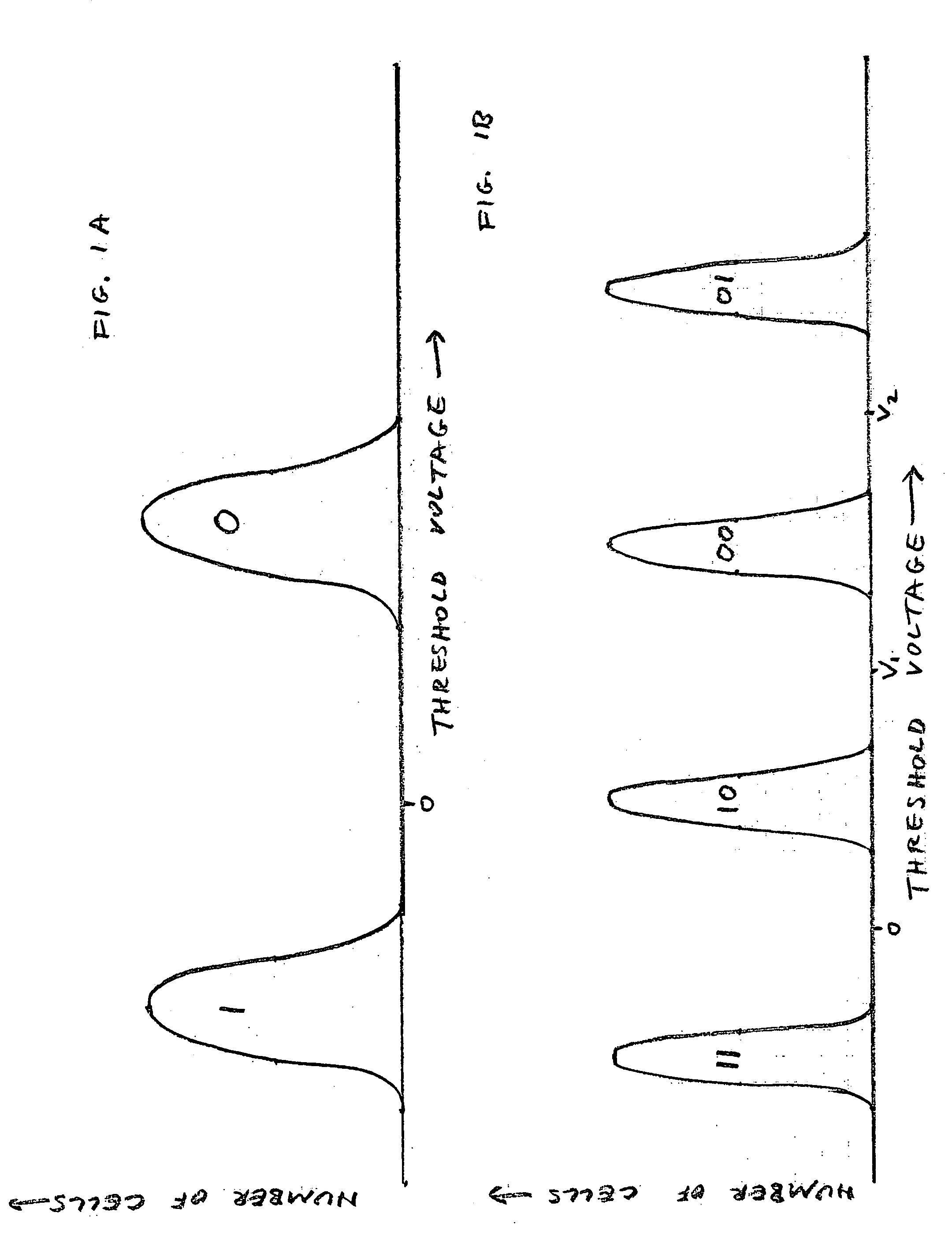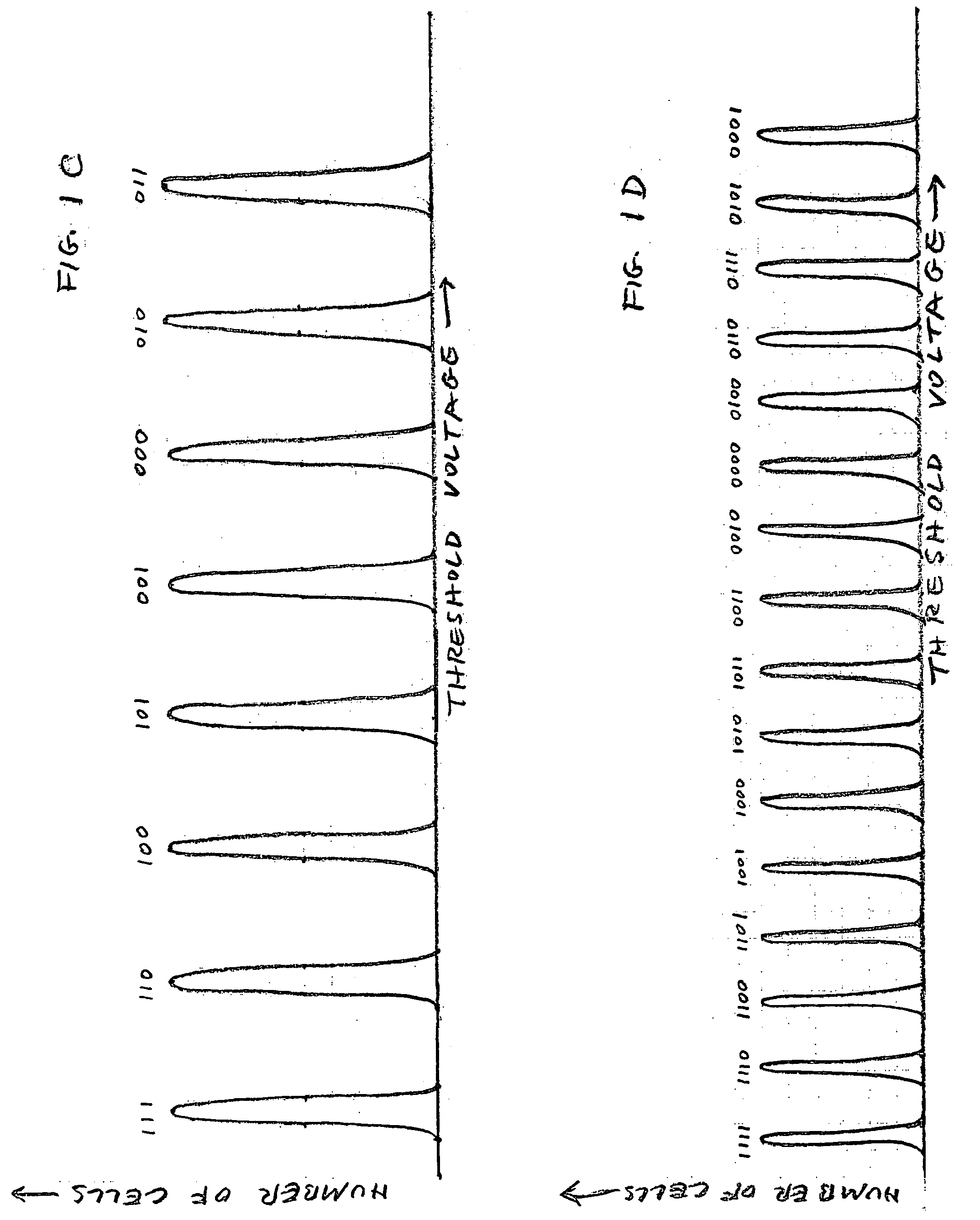States encoding in multi-bit flash cells for optimizing error rate
a multi-bit flash cell and error rate optimization technology, applied in the field of flash memories, can solve the problems of reducing the number of orderings that can actually be used, 0” cannot be used, and ordering of bit patterns that require the threshold voltage to decreas
- Summary
- Abstract
- Description
- Claims
- Application Information
AI Technical Summary
Benefits of technology
Problems solved by technology
Method used
Image
Examples
Embodiment Construction
[0066] The present invention is of a method of programming multi-bit flash cells.
[0067] The principles and operation of a multi-bit-cell flash memory device according to the present invention may be better understood with reference to the drawings and the accompanying description.
[0068] We now consider the question of what is a good ordering of the bit patterns in an n-bit MBC cell. There is no one clear-cut criterion to use for deciding what is “best”. Instead we present several different criteria to choose from. The best criterion to use in an actual design depends upon the requirements of the overall storage system, as is made clear in the discussion below.
[0069] We base our evaluation of orderings on the number of comparison operations required for reading the bits contained in an MBC cell. As already explained above, an SBC cell requires just one comparison of its threshold voltage value against a reference in order to determine the cell's data contents. A 2-bit MBC cell may...
PUM
 Login to View More
Login to View More Abstract
Description
Claims
Application Information
 Login to View More
Login to View More - R&D
- Intellectual Property
- Life Sciences
- Materials
- Tech Scout
- Unparalleled Data Quality
- Higher Quality Content
- 60% Fewer Hallucinations
Browse by: Latest US Patents, China's latest patents, Technical Efficacy Thesaurus, Application Domain, Technology Topic, Popular Technical Reports.
© 2025 PatSnap. All rights reserved.Legal|Privacy policy|Modern Slavery Act Transparency Statement|Sitemap|About US| Contact US: help@patsnap.com



